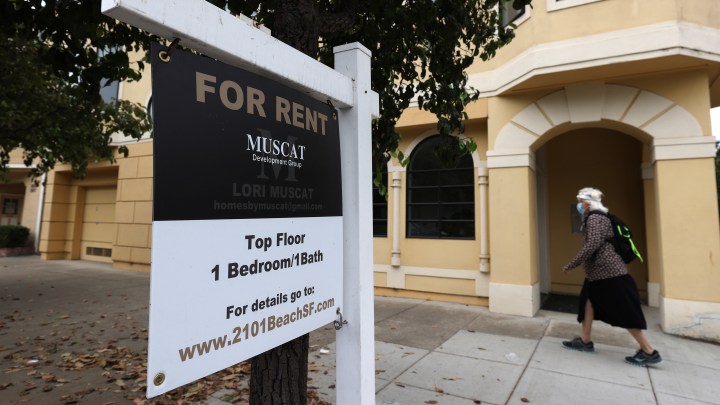
Number of Americans moving homes hits lowest level in 73 years
Number of Americans moving homes hits lowest level in 73 years

You might have heard stories of people fleeing the big cities, and that’s true in some cases. But overall, Americans moved less during the pandemic, not more.
In fact, a recent Brookings Institution study shows that Americans have been moving less and less for decades. And it’s not because they’re thrilled with where they are.
A lot of New Yorkers might find the story of Jessie Garretson familiar. She said “After a week or two working from home in a 500 square foot Brooklyn apartment we realized we needed more space.”
Garretson and her fiancé left Brooklyn and moved to Pennsylvania. A study by moving company Hire a Helper found 80% more of its clients moved out of New York than moved into it, between March and June.
But, that was New York and it was specifically during the pandemic. Most everywhere else, and up until the start of COVID-19, it turns out that Americans had been moving less than at any time in the past 73 years.
William Frey, a demographer and a senior fellow at the Brookings Institution said as of last year “we have reached a post-World War II low.”
The Brookings study found that 9.3% of Americans moved in 2019. That’s less than half of the number in the ’50s and ’60s. Frey added that “the last 10 years the drop off has been even bigger.”
Much of the reason for the drop off is because young people, who usually move more than anyone else, faced an economic downturn starting in 2007, so a whole generation has had a rough time this past decade.
“They were hit by the one-two punch of a bad housing market and a bad labor market,” Frey said.
Another reason for low migration, according to Evan Starr, at University of Maryland’s Smith School of Business, was that Americans just don’t change jobs as much as they used to.
“I think what it says is our labor markets at the moment are not vibrant. When workers move between jobs, they bring with them their knowledge, their expertise, their ideas, and this is important for innovation, its also important for firm learning,” said Starr.
But current migration numbers could change, he continued, in a work-from- home-world. “It’s much easier to change jobs if you’re just sitting at your computer, so I think the growth in work-from-home the pandemic has spurred, is going to reduce labor market frictions.”
In other words, remote working may remove some of the barriers to moving locations. But that only applies to people who actually can do their job from home.
There’s a lot happening in the world. Through it all, Marketplace is here for you.
You rely on Marketplace to break down the world’s events and tell you how it affects you in a fact-based, approachable way. We rely on your financial support to keep making that possible.
Your donation today powers the independent journalism that you rely on. For just $5/month, you can help sustain Marketplace so we can keep reporting on the things that matter to you.


















